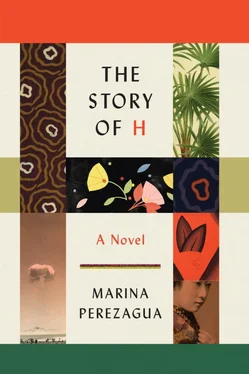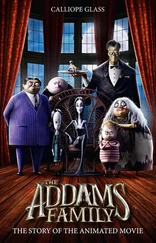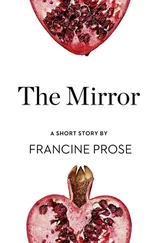Neither he nor his companions had been equipped to survive the Burmese jungle. The working conditions—he assured me—were worse than combat. Besides their tanks and their weapons, the Japanese employed something else: a perfectly pacific mode of transportation meant for recreation. Slowly but surely, though, a capillary system for the blood of war was built with them: bicycles. I came to realize over time just how obsessed Jim was with bicycles. I imagined it was because of how inconspicuously they can move while still being speedy and agile. The Japanese used them to haul artillery over difficult terrain. But they had become more than just a means for transport. Having survived not only forced labor and torture but also episodes of malaria, diphtheria, dysentery, and beriberi, Jim prized the ease of the cyclist, who was always moving forward, and the idea became a fixation: a wheel moving forward toward the end of the war. At night, on edge though trying to sleep despite the humidity and mosquitoes, the diarrhea and vomiting—whether on his part or someone else’s—he’d fantasize about a bike that would suddenly materialize and carry him away.
Daydreams like this were a common diversion among the prisoners, which brings me back to something Jim had fixated on nearly as obsessively as bicycles. At least a dozen times or more, he talked about ways the prisoners would alleviate the torture of hunger by exchanging recipes the way kids swap baseball cards. They’d hand them around from person to person, salivating while trading them off, as if they were real food. But just as Jim’s escape bike was imaginary, the recipes were simply pieces of paper, at best with some flakes of color left on a few of them. Yet both of these objects of desire, the wheels and the inky ingredients, provided nourishment if not for the body, then for the imagination, which is what allowed my man to leave that jungle alive.
His stories made it easier for me to get a handle on some of Jim’s quirks, the phobias that didn’t necessarily bother me, but that I could acknowledge more affectionately once I understood where they were coming from. Spaghetti Bolognese sent Jim into a panic. Because I knew that, of course I never prepared that dish at home, but Jim would literally tremble if someone at a nearby table ordered it when we ate out. Since recipes were their escape valve, what kept their minds off the horrors of the jungle, sometimes they became the source of fights. There were rules to how they could be swapped. One of the rules was that they couldn’t swap duplicate recipes—when energy flags, so does imagination, and so individuality was paramount for stimulating a person’s ability to pretend. Uniqueness activates the competitive urge, the risk-taking, and even the desire to play, all of which are synonymous with life. But the game, when played by dehydrated, starving men, could become a sort of hallucination, and the prisoners would get into scrapes, bite and maim each other like a cageful of famished dogs fighting over a piece of meat. Jim told me about an incident that grew out of one of the star recipes, the most disputed: spaghetti Bolognese. Despite hailing from several different culinary cultures, apparently this particular blend of pasta, meat, and tomatoes was a favorite, and they fought like animals over it. Finally, one of the spaghetti recipe brawls ended in two deaths. Hallucinating from starvation, one of the prisoners attacked the spent bodies of his companions, whose meat was as red as the pasta that started the fracas in the first place.
Another time in Central Park, Jim told me why he was so afraid of saunas. Whenever one of the prisoners committed a brutal act, the lucid ones took it upon themselves to end the life of whoever had gone berserk. That way the Japanese could never mistake the prisoner for an animal or objectify him as a thing and torture him. It was better to end their comrade’s life quickly and not be forced to cope with the dying man’s screaming, the agony of an inevitable death spread out over days. The sweatboxes were the worst of all, because death took its sweet time in them. Because these were located right beside the barracks, the prisoners who had to work sixteen- or eighteen-hour shifts couldn’t get any sleep thanks to the shrieking and laments at night. The sweatboxes were a form of solitary confinement, and the instant a person was in one, he began to sweat. The materials they were made of and the fact that they were hermetically sealed to keep the heat in meant that the victims would dehydrate within minutes and slowly begin to roast, as in an oven. Even many years later, Jim still couldn’t enter a sauna. He couldn’t fathom how anyone could derive pleasure from spending time in one of them; the torture boxes had filled with meaning all the spaces meant for sweating.
THE BRITISH ARTIST Jack Bridger Chalker drew portraits of his comrades while he was a prisoner in Burma. Jim had told me about him, but it was never clear whether they’d known each other personally. I had never asked if Chalker had painted Jim’s portrait; somehow it seemed inappropriate given the collective suffering that had taken place there. But when the portraits were published some years later and I could see their faces for the first time, distinguish their true features, their gestures and wrinkles and folds, the distinctive characteristics that represented suffering on an individual scale instead of the collective, I didn’t ask Jim if he was there but looked for him all the same, thumbing quickly through the book several times.
One sketch was of a standing man tied to two bamboo rods that seemed thicker than they usually do in contrast to the prisoner, who was skin and bones. A pail with what looked like a metal handle hung around the man’s neck, and looking at this image, one had to question whether the guards had placed the pail that way so the victim, weakened by illness, could vomit all the more easily, or if instead the pail was of itself an instrument of torture due to its contents, which we couldn’t see.
Another one of the drawings showed an ulcerous foot corroded to the bones and with pus encasing the tendons. Tropical ulcers, I heard or read, were caused by bacteria in the dirt, microorganisms that ate through flesh like acid. A scratch was enough for these invisible termites to rush in.
Another illustration that stunned me was one in which several prisoners, mouths wide open, were gathered inside a canvas tent. It looked as though they were treating one another’s canker sores, and from the black oval of one of their mouths issued the screams of all the rest. That drawing too still sparks a memory of synesthesia between sight and hearing, a drawing in pencil and watercolor that penetrates my ears like an agony or lamentation.
My mind inevitably returns to the Geneva Convention whenever I think about these images, and the articles on the treatment of prisoners of war. Jim gave me a copy of it. The contrast between what Jim lived through and the articles of the convention makes me feel as powerless as when I face up to my own experiences before comparable humanitarian agreements. Going through these articles is more than just reading a checklist of what wasn’t respected; it also outlines what was nullified by the process of objectifying prisoners, stripping them of any trace of their humanity. Let me quote from a few of these articles here, chosen at random. You’ll see that between parentheses I offer examples of noncompliance according to Jim’s experiences. May I remind you that this is but one example of how such treaties have been violated? Consider it one more piece of the puzzle that shapes my revenge once it’s put together. In the end everyone will see it as plainly as a photograph.
ARTICLE 2
“Prisoners of war… shall at all times be humanely treated and protected, particularly against acts of violence, from insults and from public curiosity.” (Jim wasn’t treated like a human being or even a sentient animal, but like a bacterium under the microscope of a curious biologist prodding it in order to observe mutations, mutilations, and death. He told me how every once in a while a guard would pass by and tell a prisoner to kneel down and open his mouth. The guard would spit in it. If the prisoner swallowed the sputum without contorting his face in disgust, the guard would continue on his way; otherwise he would slit his throat.)
Читать дальше












